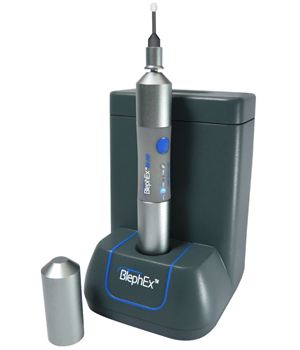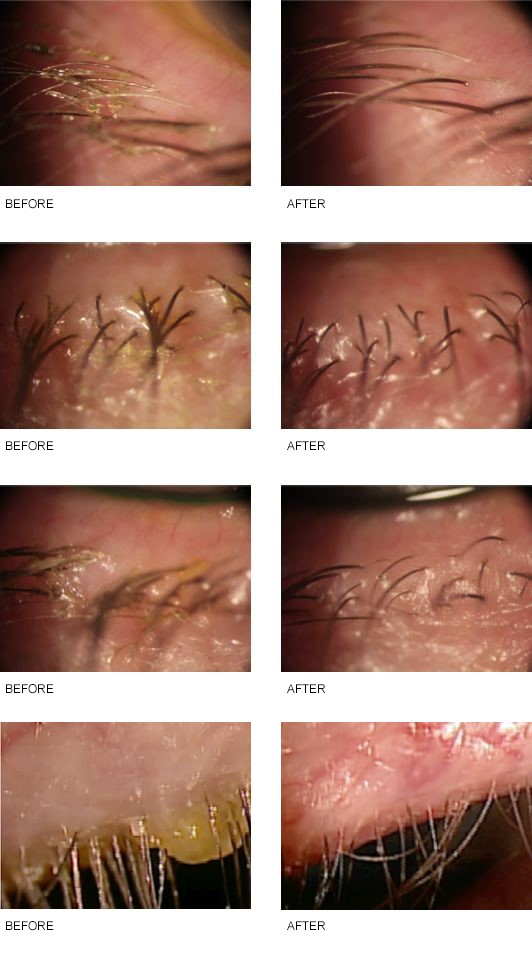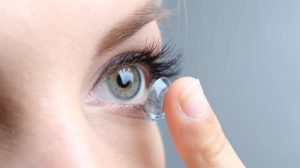What is blepharitis?
Blepharitis is an inflammation of the eyelids, often affecting both eyes along the edges of the eyelids. It typically occurs when the small oil glands near the base of the eyelashes become blocked, leading to irritation and redness. Various diseases and conditions can contribute to blepharitis, which is often a chronic and challenging-to-treat condition. While uncomfortable and unsightly, blepharitis usually does not cause permanent damage to eyesight and is not contagious
Symptoms of blepharitis include watery or red eyes, a gritty or burning sensation, greasy eyelids, itching, swelling, flaking skin around the eyes, crusted eyelashes, eyelid sticking, increased blinking, sensitivity to light, and occasional blurred vision that improves with blinking.
What is BlephEx?
BlephEx is the first and only clinical treatment for blepharitis. Over 30% of patients experience symptoms of blepharitis.
BlephEx is an innovative, in-office procedure that allows clinicians to actively treat blepharitis. By reducing scurf and bacterial debris, which are the main causes of inflammatory lid disease, BlephEx improves the overall health of the eyelid and provides relief from chronic and irritating blepharitis symptoms.
The BlephEx treatment is well tolerated and only takes a few minutes to perform, offering patients relief from the discomfort associated with blepharitis. Usually, several treatments are necessary. Additionally, BlephEx can lead to significant cost savings for patients by reducing their reliance on prescription drops and artificial tears.

How does it work?
BlephEx is a painless, in-office procedure performed by eye care professionals. It utilizes a revolutionary patented BlephEx handpiece, which carefully and precisely spins a medical-grade micro-sponge along the edge of the eyelids and lashes, effectively removing scurf and debris while exfoliating the eyelids.
The patented micro-sponge is disposable, ensuring hygiene by using a clean one for each individual eyelid. Following the procedure, the eyes are rinsed thoroughly. Most patients find the procedure well tolerated, experiencing only a tickling sensation. Numbing drops are typically applied before treatment for added comfort.
After the procedure, patients receive instructions on maintaining clean eyelids with regular nightly lid hygiene. Since home treatments are only semi-effective, the procedure is typically repeated at 4-6 month intervals.
Why Choose BlephEx?
BlephEx offers a revolutionary solution for effectively cleaning eyelids, providing relief from blepharitis symptoms. It is the first and only clinical treatment for blepharitis, offering patients improved eyelid health and comfort.
While BlephEx is primarily designed to treat blepharitis by removing biofilm, debris, and scurf from the eyelids and eyelashes, it can indirectly help in the treatment of dry eye syndrome.
BlephEx Treatment before and after
Displayed below are images illustrating the contrasts in eyes affected by blepharitis before and after undergoing BlephEx treatment. Take a moment to observe and appreciate the remarkable effectiveness of this blepharitis treatment!

How does BlephEx help in dry eye treatment?
Dry eye syndrome often occurs alongside blepharitis, as the inflammation of the eyelids can disrupt the normal function of the meibomian glands, which are responsible for producing the oily layer of the tear film. This oily layer helps prevent the evaporation of tears and maintains the stability of the tear film, thus reducing the risk of dry eye symptoms.
By effectively cleaning the eyelid margins and improving eyelid hygiene, BlephEx can help restore the normal function of the meibomian glands and promote the secretion of healthy oils. This, in turn, can help stabilize the tear film, reduce tear evaporation, and alleviate dry eye symptoms such as dryness, irritation, and discomfort.
Additionally, by reducing inflammation and removing irritants from the eyelids, BlephEx can create a more favorable environment for tear production and distribution, further contributing to the management of dry eye syndrome.
It’s important to note that while BlephEx can be beneficial in managing dry eye symptoms associated with blepharitis, it may not be sufficient as a standalone treatment for severe cases of dry eye syndrome. A comprehensive approach to dry eye management may involve additional interventions such as artificial tears, prescription medications, lifestyle modifications, and in-office procedures like meibomian gland expression or thermal pulsation therapy, depending on the severity and underlying causes of the condition.







